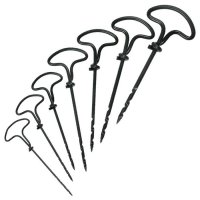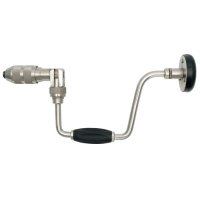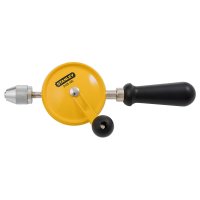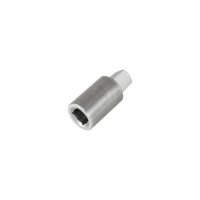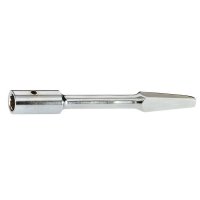
No power socket nearby and the cordless drill’s battery is dead? There are many situations where there is no electricity available, for example when working in the garden or on a construction site. For some jobs, drilling by hand is also more accurate than by machine. Mortises in chair making, for example, are often drilled by hand. We show you which tools you can use to drill without electricity.
Auger gimlets
These simple drilling tools do not require any mechanics at all. Auger gimlets usually come as a including several drill diameters. These drills pull well into the material thanks to their fine screw tips and the deep groove ensures proper chip ejection. Due to their slightly tapered shape, they provide a better hold for the screws.
Application: Auger gimlets are ideal for outdoor activities (a selection of two to three drills takes up hardly any space and weighs little) and for handicrafts with children (low risk of injury as there are no mechanical parts).
Tip: You can use such drills instead of clamps, for example, during assembly work to hold two wall parts together. One drill bit is screwed in near each edge, both wall parts are placed against each other and then tied together with some cord around the hand drills until the parts are finally screwed together.
Braces
If there is no power available or if you want to drill with great precision, braces are a popular choice even nowadays. Current models run particularly smoothly due to the ball-bearing head. Most braces are equipped with a ratchet that can be switched between clockwise or anti-clockwise rotation, which enables drilling or screwing close to the edge even in confined spaces.
There are braces with three-jaw chuck, which are ideal for clamping bits with hexagonal shanks, and braces with four-jaw chucks. Both types have chucks with a square socket inside to fit classic auger bits with square shank.
Application: Braces are very versatile. Provided suitable bits are used, braces are also suitable for deep holes in beams and holes with larger diameters, due to their high force transmission.
Suitable bits for braces
Typical hand drilling bits have a threaded tip which pulls itself into the wood like a screw (e.g. Auger Bits, 6-Piece Set). Brace bits usually have a tapered square shank. Their conical shank must engage in the square socket at the bottom of the chuck! If the shank is too short, an adapter is needed.
In chair making and in the construction of green wood furniture, braces are often used together with a Tapered Drill Bit and matching Tenon Cutter. The Adapter for Veritas® Tenon Cutter also takes other bits with hex shank, so that the brace can also be used for screwing in screws and hooks.
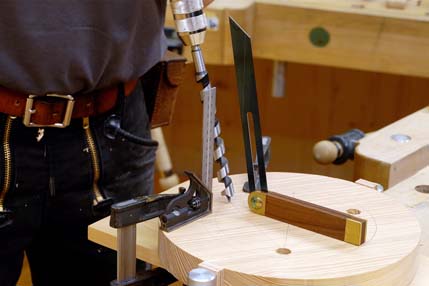
Even today, people still like to work with a brace when making chairs
Hand Drill
The Hand Drill is intended for quickly drilling small holes in wood and metal and for countersinking and deburring holes. The powerless drill has a bevel gear drive that transmits the crank movement to the drill chuck. Hand drills usually have a standard quick-release chuck for standard drill bits with a straight shank, so that bits for metal and plastic can be used in addition to normal wood drill bits.
Application: For drilling holes with diameters up to approx. 8 mm, often used in jewellery making and as a tool for pre-drilling internal cut-outs in fretwork.
Breast drill
A breast or chest drill also usually has a standard drill chuck (quick-release drill chuck) and is thus suitable for standard bits with a straight round shank (as well as masonry drill bits). The breast drill owes its name to how it is used: the end of the shaft is pressed against the chest, so that more pressure can be applied to the drill with the body weight than by just pushing from the arms. The typical breast drill has a gearbox with two speeds, which are switched by shifting the crank.
Application: In combination with wood or masonry drill bits, ideal for horizontal drilling in wooden beams and masonry.

